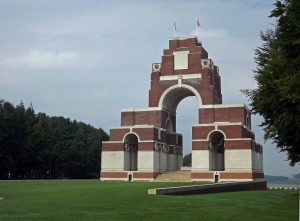 Private 7716. North Staffordshire Regiment. (1st Battalion)
Private 7716. North Staffordshire Regiment. (1st Battalion)
Isaac Hammond was born in 1889 in Kingsley the son of William and Maria Hammond, the youngest of their four children. In 1891 William (Father) was employed as a Coal Miner, the four children were John (15yrs), Susan (9yrs), Sarah (5yrs) and Isaac (2 yrs). (1891 Census).
In 1901 the family were still living in Kingsley Green, at that stage only Sarah (15yrs) and Isaac (12yrs) remained living at home. Sarah was employed locally at a Tape Factory as a Pin Winder. (1901 Census).
In 1910 or early 1911 Isaac Hammond married Bertha who was 4 years younger.
In 1911 Isaac (23yrs) and Bertha Hammond (19yrs) were living with his older brother John, John’s wife Edith and their five children in a terraced house at 3 Oak Street, Cheadle, Staffs. The census indicates Isaac and Bertha had been married for 6 months. (1911 Census).
On a date as yet to be established Isaac Hammond joined the Army, Service No. 7716 and was posted to the North Staffordshire Regiment (1st Battalion). He entered France in May 1915 (Ancestry Records and Medal Card). His service number is within 200 of Charles Allen who was killed in early August 1916. This would suggest that like Charles he was a territorial soldier before the war – his medal car reveals he was a Lance Corporal at some stage perhaps as an acting rank. This is further confirmed by the fact that he is on the 1914 nominal role for the regiment at the outbreak of the war.
The 1st Battalion, North Staffs Regiment were involved in the Battle of the Somme, (1st July – 18th November 1916). (Wikipedia).
Isaac Hammond died on 31st August 1916. (Army Medal Card – St Werburghs Plaque). However the Commonwealth War Grave Commission has his date of death as 21st August 1916 – as does the Staffordshire Regiment Museum. He has no known grave and is commemorated on the Thiepval Memorial.
North Staffs Regiment (1st Battalion) War Diary has been obtained and shows that the battalion were in action in the latter part of the month of August. In the period of 21st to 22nd August the battalion relieved the 8th Queens (Royal West Surrey Regt.) They were subject to shelling and suffered some casualties as a result.
The main action appears to have taken place on 31st August when the battalion were attacked having moved into the Devlville Wood area. In preparation an advanced party visited and described the trenches as in poor condition and communications non existent. Visits by junior officers were made as well over the coming days and it seems that the men spent some time in barracks which were described as inadequate but giving shelter from the rain and cold.
30th August 1916 saw the battalion relieving 9th Rifle Brigade as they moved into Delville Wood. Almost immediately they were subject to heavy shelling and the South Staffordshire Regiment to their left were attacked. The North Staffs had sent a Lewis gun and some bombs (grenades) to assist them but they retreated through the North Staffs lines. It seems that only desperate and brave fighting prevented the Germans getting through and the attack was halted albeit a section of trench had been lost to the Germans.
Of the battalions 16 company officers 2 were killed, one was wounded and missing and three were wounded during this attack. Of the other ranks it is unclear how many were killed for certain from the diary. There is no entry relating to this but from the officers messages at least 26 were killed, 45 wounded and 6 were recorded as ‘buried’ suggesting an explosion had caused the collapse of a trench or similar. The fighting on this day was clearly very tough and a letter was sent from the Divisional General to congratulate the soldiers for their efforts.
Footnote 1: The Battle of the Somme, also known as the Somme Offensive, was a battle of the First World War fought by the the British and French armies against the German Empire. It took place between 1 July and 18 November 1916 on both sides of the River Somme in France. The battle was one of the largest of World War I, in which more than 1,000,000 men were wounded or killed. (Wikipedia).
Footnote 2: The Thiepval Memorial commemorates 72,000 British and Commonwealth soldiers that fell during the Battle of the Somme between July and November 1916 and who have no known grave. (Wikipedia). Four men from Kingsley Parish are commemorated on the Thiepval Memorial; Charles Allen (died 12th August 1916), Isaac Hammond (died 31st August 1916), George Price Bevans (died 8th September 1916) and Arthur Keene (died 12th October 1916). A fifth man Thomas Clowes (died 19th October 1916) also lost his life in the battle and is buried nearby in a military cemetery at Arras.

Pingback: Centenary of the Battle of the Somme |